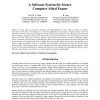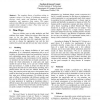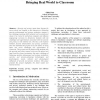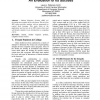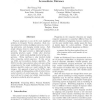FECS
2006
14 years 3 months ago
2006
FECS
2006
14 years 3 months ago
2006
The Department of Computer Science at California State University, Los Angeles has established an assessment process to guide the continuous improvement of the undergraduate curri...
FECS
2006
14 years 3 months ago
2006
In this paper, we discuss the advantages and disadvantages of using network simulators to teach networking concepts versus having students write programs. The authors have experie...
FECS
2006
14 years 3 months ago
2006
- The complete history of problem solving in computer sciences is a history of continuous attempts to discover, study, mimic and implement ideas, models, metaphors, and sequences f...
FECS
2006
14 years 3 months ago
2006
- Developments in CS1 pedagogy seek to improve the capabilities of students in their understanding of how to write programs. This involves learning how to solve various types of pr...
FECS
2006
14 years 3 months ago
2006
FECS
2006
14 years 3 months ago
2006
Computer-based grading tools have existed for nearly as long as computing courses. The majority of these tools have focused on completely automatic grading of functional requiremen...
FECS
2006
14 years 3 months ago
2006
Game programming is interesting but tough. It could be counted as a sophisticated software development in an undergraduate curriculum because it deals with a wide range of knowled...
FECS
2006
14 years 3 months ago
2006
- Student Response Systems (SRS) are becoming more popular in the classroom. The use of an SRS system provides students with an opportunity to control their learning. This study lo...
FECS
2006
14 years 3 months ago
2006
Program plagiarism is one of the most significant problems in Computer Science education. Most common plagiarism includes modifying comments, reordering statements, and changing v...
